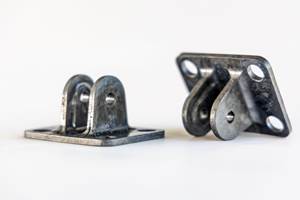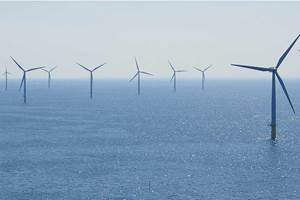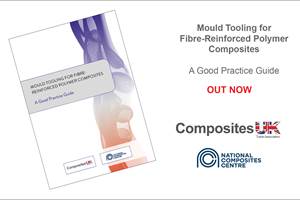CompositesWorld News for Jan. 03, 2020
Read news from Composites One, Institute for Advanced Composites Manufacturing Innovation (IACMI), and Premium AEROTEC
IACMI awarded grant to expand U.S. defense manufacturing workforce
Through a $5 million grant, IACMI and partners will scale up Davis Technical College’s composites training program to multiple U.S. locations.
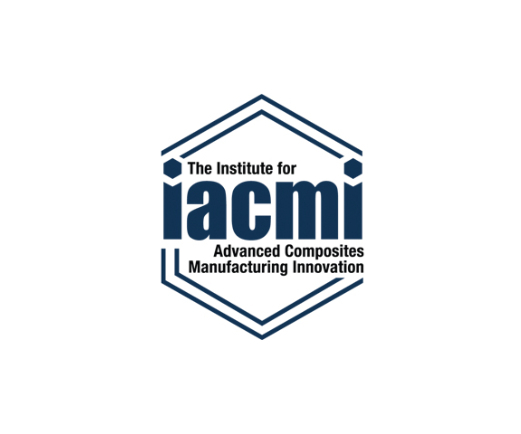
The Institute for Advanced Composites Manufacturing Innovation (IACMI; Knoxville, Tenn., U.S.) has been awarded a $5 million grant over the course of the next three years to expand a composites training program begun by Davis Technical College (DTC; Kaysville, Utah, U.S.) to four additional locations across the U.S.
Through the Manufacturing Engineering Education Program (MEEP) grant, IACMI plans to leverage its workforce development credentials and networks to fill a skills gap in the U.S. Department of Defense (DOD) manufacturing supply chain, particularly focusing on the areas of aerial combat or reconnaissance equipment manufacture.
In addition to Davis Technical College, the partnership also includes organizations that will leverage resources and expertise to complete the learning network:
- Enterprise State Community College in Enterprise, Ala., U.S., and the Composites Prototyping Center in Long Island, N.Y., U.S., which will be home to learning centers;
- Purdue University (West Lafayette, Ind., U.S.), Vanderbilt University (Nashville, Tenn., U.S.), the University of Dayton Research Institute (Dayton, Ohio, U.S.), and the University of Tennessee (Knoxville, Tenn., U.S.), which will serve to implement the curriculum;
- The American Composites Manufacturers Association (ACMA; Arlington, Va., U.S.) and SpaceTEC CerTEC, which will provide education alignment and certification support;
- Composites One (Arlington Heights, Ill, U.S.), which will collaborate to develop and deliver workshops with IACMI to support the continuous learning requirements for instructors; and
- The Robert C. Byrd Institute (RCBI; Huntington, W.Va., U.S.) Apprenticeship Works program, which will assist employers with establishing Department of Labor certified apprenticeship programs.
According to IACMI, this national program will have the potential to address composite manufacturing workforce deficits in every state, and will involve collaborating with DOD manufacturers to develop and deliver relevant training programs and providing opportunities for program graduates in high-skill, high-wage careers. Through collaboration with industrial experts and partners, the curriculum is designed to be competency-based, providing the learners with real-world experience, and it embeds fault simulations to sharpen participants’ decision making and trouble-shooting abilities.
The localized Davis Technical College, begun in 2006, has seen much success, IACMI says. Utah has seen the composites and advanced manufacturing sector increase in this time, and now the state is home to more than 100 companies in the advanced materials sector.
“… The partnership between IACMI and DTC is very dynamic and could bring qualified trained technicians to companies nationwide,” says Ginger Chinn, managing director of Utah’s Urban and Rural Business Services GOED.
In addition to training program trainees, the national program will also train instructors prior to program launch and will continue to provide support throughout the duration of the program. Instructors will be trained in proven teaching methodologies and will receive certifications in specific processes and technologies.
The national program will be led by IACMI’s workforce director, Joannie Harmon Heath, and Davis Technical College’s national director for composites pathways, Wes Hobbs.
“Over the past three years, Davis Technical College has had more than 150 graduates earn the American Composites Manufacturers Association’s Certified Composites Technician credentials as an earned capstone credential at the end of their program completion. These credentials allow graduates to enter the workforce with the certification reinforcing the applicable skills developed through the program,” says Tom Dobbins, ACMA president.
“We look forward to utilizing the network that we have created over the past five years through IACMI to expand the national training program. Davis Technical College’s leadership in this education space is incredibly valuable, and it will be a great resource to the U.S. to have this program available to more manufacturers and participants,” says Joannie Harmon Heath.
Premium AEROTEC demonstrates hybrid CFRP-AM metal design for future lightweight aircraft structures
Successful completion of the ThermOplast Additive Manufacturing STrukturen (TOAST) project offers cost, time and weight savings via a novel, modern hybrid design.
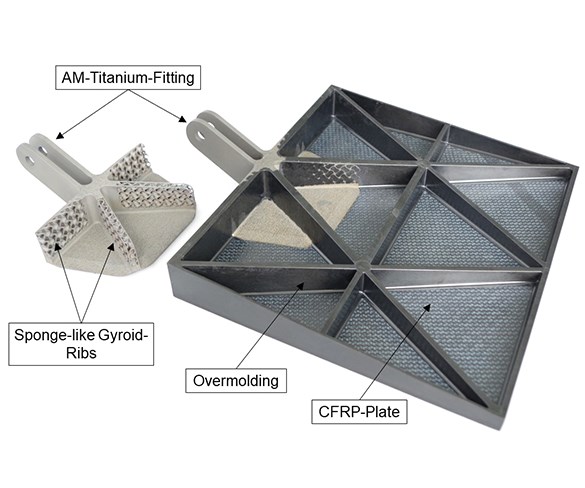
Today’s aircraft structures consist of many different materials. For example, the fuselage and wing structure of the Airbus A350XWB is constructed mainly of composites with some metal parts. Here, parts are joined, per classical hybrid design, with bolts and rivets. This design leads to high assembly time, effort and cost. Additionally, the high number of fasteners in this classical hybrid design introduces unnecessary weight, as well as stress concentrations at load introduction points.
In the project TOAST, Premium AEROTEC (Augsburg, Germany), a Tier 1 supplier of fuselage structures for the A350, has presented completely new methods of joining composites and metals. In this way, the disadvantages of the classical hybrid design with bolts and rivets can be eliminated. Premium AEROTEC developed and manufactured, in less than five months, a demonstrator for an aircraft airbrake-like structure, using a modern hybrid design. It comprised a titanium load introduction fitting made with additive manufacturing (AM) and a carbon fiber-reinforced polymer (CFRP) thermoplastic composite plate, joined using thermoplastic composite overmolding.
The innovation of this demonstrator is the connection of the different materials without bolts or fasteners. This was only made possible by the use of additive manufacturing and thermoplastic overmolding. The titanium fitting was designed with pins on its lower side and ribs designed with gyroid structures, both readily produced with AM. The AM titanium part and a thermoplastic composite plate were then placed into a thermoforming mold. The two components were pressed together in a thermoforming process with an injection molding step immediately after. During this step, the V-shaped thermoplastic composite ribs were overmolded and pressed into the sponge-like gyroid ribs of the titanium fitting.
The joints in this hybrid demonstrator were realized either by material connection (CFRP – CFRP) or form closure (titanium AM – CFRP). In parallel, structural tests for the determination of the mechanical properties of the joints were performed. These tests showed that the load transfer capabilities were similar to those with rivets and bolts.
The advantages of this modern hybrid design, in comparison to the classical design using mechanicl fasteners, include fast manufacturing and assembly without fasteners, fewer parts are necessary and the process steps for the assembly are shorter and automated. Additionally, the efficiency of the design freedoms exploited by using AM and injection molding lead to weight reductions. This technology can be applied anywhere where loads must be transferred between points and surfaces.
Premium AEROTEC is the first component manufacturer in the world to supply 3D-printed components made out of titanium alloys for serial aircraft production. Premium AEROTEC is a global player in the aviation industry and achieved a turnover of €2 billion in 2018. Its core business is the design and construction of aircraft structures in metal and carbon fiber composite materials. The company has sites in Augsburg, Bremen, Hamburg, Nordenham and Varel in Germany as well as Braşov in Romania. Premium AEROTEC employs around 10,000 people worldwide.
Airbus, Aston Martin launch special edition ACH130 helicopter
The ACH130 Aston Martin Edition, unveiled Jan. 3, includes luxury interior features designed by the automaker.

Source | Airbus
On Jan. 3, luxury automaker Aston Martin Lagonda (Gaydon, U.K.) and Airbus Corporate Helicopters (Marignane, France) unveiled the ACH130 Aston Martin Edition, the first offering from a recently-announced partnership between the two companies. The special edition ACH130 helicopter comes with one of four interior and exterior designs generated by Aston Martin.
According to Airbus, aeronautical designers at Airbus Corporate Helicopters (ACH) and automotive designers at Aston Martin have worked closely together for more than a year on the development of the ACH130 Aston Martin Edition, with the goal of achieving a new level of aesthetics and attention to detail to the helicopter market.
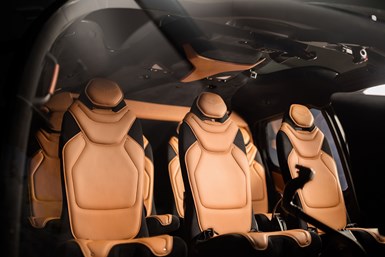
Source | Airbus
Available in four external liveries (Stirling Green, Xenon Gray, Arizona and Ultramarine Black) with complementary interiors, the helicopters are embellished with Aston Martin signature elements such as Aston Martin wings, which are embossed onto luxury leather features throughout the automotive-inspired cabin. On the rear of the front seats the same brogue detailing that is found in a DB11 runs down the center of the seat, and the doors have been trimmed with leather to provide passengers for added comfort. The companies used materials from the Aston Martin automotive palette in the interior to match the interior of Aston Martin sports cars.
“We have our own set of automotive design principles, but in recent years we have been learning how to apply our principles to other areas of design, such as architecture, motorcycles and now helicopters,” says Marek Reichman, Aston Martin vice president and chief creative officer. “This first application of our design practices to a helicopter posed a number of interesting challenges, but we have enjoyed working through them. Beauty is of vital importance to Aston Martin and to our customers and we think the ACH130 Aston Martin Edition is an inherently beautiful machine. It provided a wonderful canvas for our team to work on so we now look forward to seeing everybody’s reaction.”
“The ACH130 Aston Martin Edition is optimally positioned in the market for hands-on owners who draw satisfaction from personally piloting their aircraft and it generates strong brand-loyalty,” says Frédéric Lemos, head of Airbus Corporate Helicopters.
The ACH130 Aston Martin Edition is available on request for deliveries starting the first quarter of 2020.
SpaceX tests new Crew Dragon parachute design
Successful parachute tests bring the Crew Dragon another step closer to a crewed flight test.
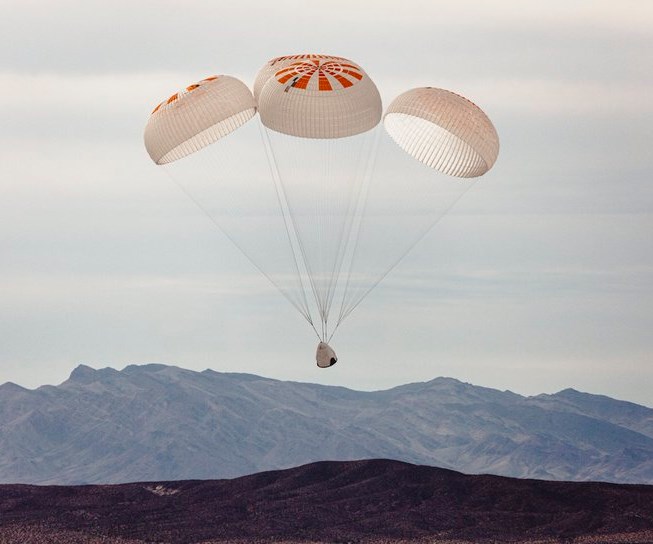
Source | SpaceX
SpaceX (Hawthorne, Calif., U.S.) on December 22 completed its tenth successful consecutive multi-chute test of an upgraded parachute design for its Crew Dragon spacecraft. The new design, known as the Mark 3, was developed after problems with asymmetric inflation of the Mark 2 parachutes and a failed parachute test in April of 2019.
In October NASA Administrator Jim Bridenstine stated at an event at SpaceX headquarters, “We are committed as a team, SpaceX and NASA, to the Mark 3 parachute, which is superior to the Mark 2. We need to get with the Mark 3 now consistent, repeatable performance.”
The successful parachute tests bring the Crew Dragon another step closer to a crewed flight test. While the Crew Dragon has completed an uncrewed flight test to the ISS, it still needs to complete a test of the capsule's emergency abort system — a test scheduled for January 11 — prior to a crewed flight test, which it hopes to conduct in the first half of 2020.
COHMAS Lab to host composite materials workshop
The composites industry and engineering workshop will be held at King Abdullah University of Science and Technology in March 2020.
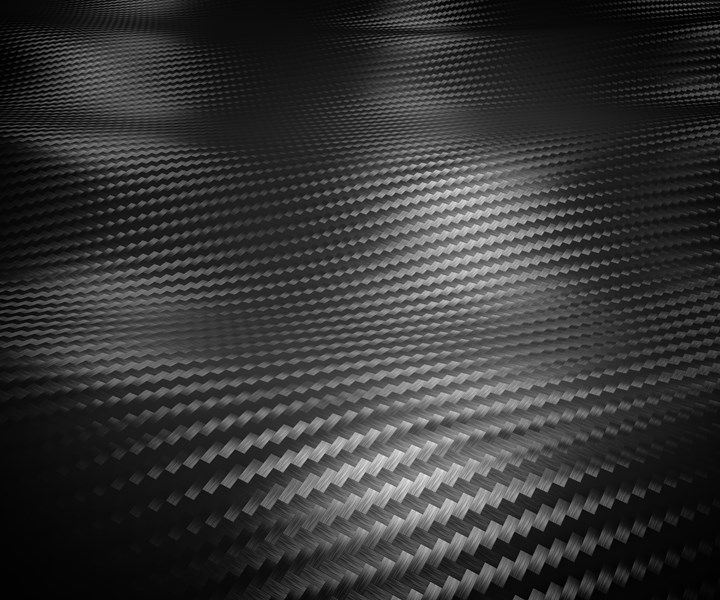
COHMAS Laboratory at KAUST (King Abdullah University of Science and Technology; Thuwal, Saudi Arabia) has announced that it will host a composite science and engineering workshop to take place March 16-18, 2020.
Find out more information on the workshop website.
Topics include:
- addressing the needs for Composite Industry 4.0,
- imagining new applications in energy and transportation sectors,
- improving composites through big data and artificial intelligence,
- inventing new concepts for composite assemblies and large structures, and
- building the composites industry.
Workshop organizers say the workshop will provide opportunities for participants from academia, industry and governments to exchange ideas, discuss the current state of research and develop strategies for composites industry growth.
The workshop is organized around presentations, as well as round table discussions and poster sessions. The current list of speakers includes university professors from various countries and representatives from SABIC (Riyadh, Saudi Arabia), the National Composites Centre (Bristol, U.K.) and more. See the updated list of speakers on the conference website.
Related Content
9T Labs, Purdue University to advance composites use in structural aerospace applications
Partnership defines new standard of accessibility to produce 3D-printed structural composite parts as easily as metal alternatives via Additive Fusion Technology, workflow tools.
Read MoreChemnitz University of Technology receives €6 million to expand research into "green" carbon fiber
Carbon LabFactory and InnoCarbEnergy project conduct R&D across entire value chain from raw materials through processes to structures and systems on a pilot line with technology demonstrators.
Read MoreUniversity of Sheffield researchers to drive structural health monitoring in U.K. infrastructure
The £7.7 million program, ROSEHIPS, anticipates exploitation of machine learning, sensing and digital twin technology for automated health monitoring in infrastructure, such as bridges, telecoms masts and wind turbines.
Read MoreComposites UK launches best practice guide for composites tooling
“Mould Tooling for Fibre-Reinforced Polymer Composites” is latest in Composites UK’s series of good practice guides, available online for free.
Read MoreRead Next
From the CW Archives: The tale of the thermoplastic cryotank
In 2006, guest columnist Bob Hartunian related the story of his efforts two decades prior, while at McDonnell Douglas, to develop a thermoplastic composite crytank for hydrogen storage. He learned a lot of lessons.
Read MoreComposites end markets: Energy (2024)
Composites are used widely in oil/gas, wind and other renewable energy applications. Despite market challenges, growth potential and innovation for composites continue.
Read MoreCW’s 2024 Top Shops survey offers new approach to benchmarking
Respondents that complete the survey by April 30, 2024, have the chance to be recognized as an honoree.
Read More














.jpg;maxWidth=300;quality=90)







